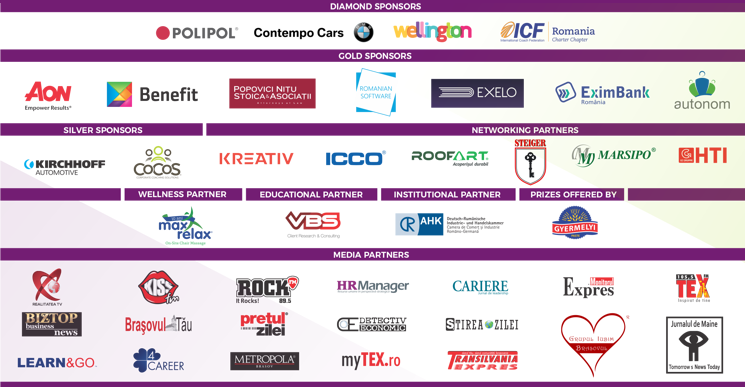The Role of HR in Cyber Security
In a 2012 article in The Washington Post, it was reported that both the public and private sector will require 50,000 cyber security jobs in the immediate future. For example, the Pentagon has plans to expand their cyber security workforce from 900 to 4,900 military and civilian personnel in the next few years. In recent times, there have been countless efforts in order to increase students’ desire and interest in the field, due to the simple fact that cyber threats won’t wait until companies, agencies and countries are ready. From a HR perspective, the recruitment process of a cyber-professional is of the utmost importance.
Reconsider the status quo
Organisations as a whole have to rethink their hiring and development strategies. Based on the 2013 IT salary survey report done by Information Week, HR specialists will have to continuously educate themselves on how to identify, attract and retain cyber security professionals. Unfortunately, at the moment, degrees and certifications still hinder highly qualified people from even being considered for an interview, let alone the actual position.
Given the fact that most cyber-attacks are done by people who do not have the diplomas to actually confirm their expertise, maybe it is time to re-evaluate the recruitment process. More and more sophisticated attacks are being launched week after week and it is highly unlikely they are all done by university graduates. HR managers and their teams may have been looking at this issue all wrong; perhaps a more liberal and progressive approach to selection and recruitment will allow companies to hire the most competent candidates for the required positions.
Even though education plays a crucial part in forming fantastic generations of IT-savvy individuals, it should be noted that there are gamers and hackers out there who are majoring in totally unrelated subjects. There is definitely talent, interest and ability in many of these people and perhaps all they require is the right incentive to switch fields. Companies should be encouraged by this thought and take advantage of these circumstances and try and engage these students for a future collaboration and mutual benefits. For example, there are various cyber competitions which are held every year in high schools and universities. These gatherings are a fantastic opportunity to identify possible future employees. Ordinary prizes could fall behind the opportunity of dealing with intricate security problems or learning and developing new skills and techniques.
The role of human resources
A considerate number of cyber security problems occur because of the actions performed by a company’s own workforce. The number of cyber-attacks could be reduced with the joint help and collaboration of HR and IT professionals within an organisation. Specifically, HR departments hold some of the most private, important and sensitive information of them all. An HR database holds information such as: bank details, dates of birth, social security numbers, home addresses and many more. It is crucial that in this day and age HR departments not only understand how to protect their own data, but the organisation’s as well.
HR managers could play a centre role in preserving the security of the company in cyberspace. This can be done through a couple of easy steps.
- Ethical and practical security measures
Regular check-ups may stop employees from putting the company in harm’s way, but it has to be morally consistent with the way in which employees think and behave. Randomly generated passwords have been tried and tested but, unfortunately, given the multitude of technology surrounding us nowadays, it is hard to keep up with all of them. Some organisations have tried monitoring their employees’ activity, which almost immediately led to questions revolving around trust and how this practice is crossing the boundaries between personal and professional life. This is where the HR team needs to analyse and advise which course of action is best.
- Risk management and employees
Inside an organisation with a strong risk management strategy, HR departments have the opportunity to mediate the impact of employee turnover through monitoring and prevention. When an employee is bound to leave the company, the HR team can manage that exit keeping in mind the security aspect as well, thus greatly contributing at stopping any leaks. For example, in the United Kingdom there already is a guideline on how organisations should manage people, physical and cyber risks.
Due to the nature of cyber-security, the IT department cannot be held solely responsible. Technology has become ever present and is instilled in almost every aspect of the office life, thus making organisations vulnerable to all sorts of attacks.
When companies make sure they have one of the best security programmes in place, they can be sure that both internal and external information is safely secured, which of course it is in the best interest of both HR and the company.
According to data gathered by Heimdal Security, cyber-crime is costing the global economy an astounding $100 billion each year and that nearly 60% of fired employees steal valuable organisational data when they leave a company.
Although this issue may seem highly complex and problematic, HR specialists must deal with this situation through innovative workforce and development strategies. There are solutions, but they require immense thinking and planning ahead. Bold people and ideas could very well arise with the necessary means of fighting back these attacks.
Great People Inside provides easy-to-use tools and processes to attract, assess, match, select, onboard, manage, develop, benchmark and maintain workforces anywhere in the world.
Finding the right talent, the best fit for the job and your organisation, can be a very challenging task. It requires deep knowledge of your own organisation’s culture and keen understanding of the candidate’s personality, strengths, interests, work style and other characteristics. Our technology and solutions will do the work for you, helping you find employees who can flourish and reach the highest performance required to constantly bring your company forward.
Request a free demo:
Sources:
http://www.paconsulting.com/insights/putting-human-resources-at-the-heart-of-cyber-security/
http://www.hcamag.com/hr-news/why-hr-is-critical-in-cybersecurity-228188.aspx
https://hr.blr.com/whitepapers/HR-Administration/Employee-Privacy/Cybersecurity-threats-A-people-problem-HR-can-solv
http://www.ghrr.com/blog/2016/02/24/the-role-of-hr-in-mitigating-cyber-security-threatss/





